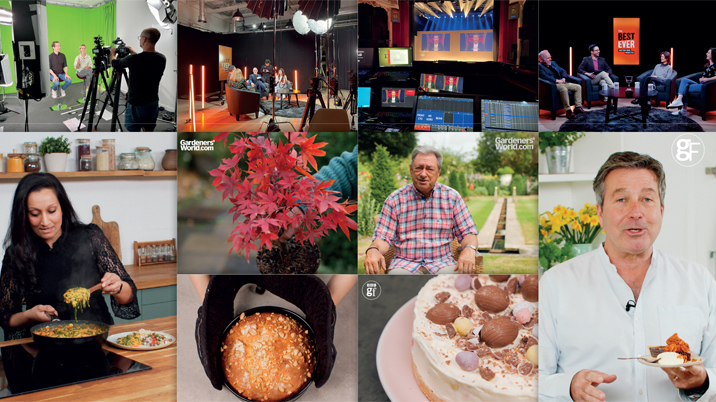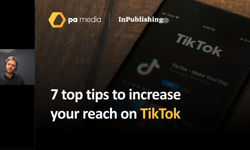
From ice buckets to cinnamon, Despacito to Baby Shark, there is no doubt that all of our influences, inspirations, information and entertainment are more frequently being sourced from video content.
More and more of us are watching videos as our primary source of content, perhaps hardly surprising with the ubiquitous use of smartphones. In a recent survey we conducted at Immediate Media, echoing similar studies by Google and others, we found that 64% of people in the UK watch digital video on a daily basis. This rises even higher when AVOD and SVOD services like streamers and broadcast catch-up services are included. 20% of the entire population watch digital video 2-3 times per week. This can amount to up to twenty hours of digital video consumption a week.
And it’s become a crucial influencer on our decision making – from food cravings to air fryers and even the tough decision last year between Barbie or Oppenheimer.
This evolution in content consumption can be seen in the transition of many traditional media companies. As media consumption is increasingly in the hand of the viewer – 130 minutes per week according to the Immediate research – rather than the corner of the living room (40% less than on mobile), the likes of Channel 4, ITV and BBC Studios are diversifying with digital-only models to try to win a share of the large increase in video advertising. The UK video advertising market is expected to be worth £5.2bn in 2024; this is a 72% increase in the last three years and represents 24% of all advertising revenue in the UK.
These factors are the likely influences behind Piers Morgan’s pivot to YouTube and the ‘Channel 4.0’ project. At Immediate, this strategic choice makes total sense. We are digital natives. Our teams make compelling content every single day that is enjoyed by over 28 million adults in the UK each month. We know what informs and educates them. We are their source of inspiration and entertainment.
Investment in video
Over the past twelve months, we have continued our focus on video. Our video output has grown by over 1,000% in the past year with our editorial teams now creating thousands of videos on topics our audiences love. On RadioTimes.com, we have seen an increase of over 364% in click to play videos views, with a 1,200% increase on our social platforms.
Our History Extra subscribers are ‘binge watchers’, enjoying an average of five long-form videos in a single session. This is something we’re mirroring across all our brands. We know our audiences choose video to explore an interest, learn something new, make a decision and, overall, to be entertained. Our rich legacy of content creation places us at the heart of all of these missions.
Training in video
In order to make this possible, we’ve democratised video production, so all our editorial teams – with their expert, specialist knowledge and deep understanding of their audiences – have the skills base to create content across multiple formats. Embedding this video centricity has been about developing a growth mindset across the business and understanding of the requirements needed. For Immediate, this has involved a significant investment in training, with 302 unique training events on eleven different video related topics, with over 1,000 hours of training delivered.
This fuels knowledge with active, working ability to create, or brief, video… or both. Conversations at planning meetings today differ greatly from those held even eighteen months ago – “Is there a video in this topic?”, “What is the key message(s) I am trying to make with this video?”. This has helped bring our content to life for our audiences; from the Gardeners’ World magazine team showing what a day working in Monty Don’s garden is like, to sharing some of the most memorable Radio Times front cover shoots of 2023; and History Extra adding video content to their extensive podcast output.
Deeper understanding of our audience’s needs
Beyond just making video, we need to make sure our audience can find it – on whatever channel they prefer – and that it’s meeting their needs.
That involves us doubling down on data so we actually, more than just instinctually, know what they like to watch, on which device, for what purpose, so we can be confident in the video formats we provide; their duration, modes of production and delivery of information.
We’ve worked hard at defining why a video viewer would want to consume our video content. Immediate is a home to trusted brands that people love – they use us to get information, learn more about their passions, compare and choose what is right for them. Our work is focused on ensuring we’re aligned with their needs, and are working tirelessly to place that content where they reside.
How our brands are becoming tailored for the small screen
Knowing that Radio Times is a destination for those looking to discover what to watch, where and when, we are able to support with trailers, viewing guides, episode catch-ups and critical reviews on all of the TV programmes, movies, streaming services and podcasts around. Our gaming team on Radio Times are also providing cheats, hints and tricks of all of the biggest releases to help our audiences reach ‘the next level’.
For, BBC Gardeners’ World magazine, as an example, we have a series of weekly videos that track progress on the growth of the seeds we include free in our subscribers’ edition of the magazine; we include instructions and inspirations on how to replicate the wreath in our annual festival issue; and we offer a range of video features to accompany our Gardens of the Year. While on Made For Mums, we have provided a folding / unfolding guide to every main child transportation system and offer inspirational crafting ideas to match the season.
If consumers fancy finding out more about one of our restaurant reviews, we now include video via QR code in every Olive magazine; while on Good Food, we have spent the previous 18 months systematically making recipe videos – about 25 per month – to add to the pages of our top performing recipes.
As a result, in 2023, we witnessed a 41% rise in engagement on recipe pages on our Good Food platform, and Radio Times has seen a 126% boost in video-driven search traffic. We’ve launched three new TikTok channels for some of our key brands, developed ad partnerships, attracted new audiences and served existing ones in ways we simply weren’t before; helping to develop a deeper relationship.
Adapting for the future
It is of course crucial to ensure your approach isn’t just about working for today, but that it can be flexed for new platforms and formats as they develop.
Our brands’ content works across multiple channels – whether on their own sites or social accounts, or third-party like YouTube – serving disparate interests and user needs. As someone who has worked across the visual media - from traditional public service and commercial broadcasters to TikTok and now in digital publishing – I’m conscious that each pocket of video is being received in different ways. Being able to produce content simultaneously takes tacit knowledge of your topic, audience, multiple storytelling devices, and technical ability. It relies on thinking in video at the point of conception and integrating it at every stage of production.
It has also allowed us to bring cameras into our Good Food test kitchen to be able to capture all stages of our recipe development and mine them for tips, hacks, ingredient inspiration and easy midweek meals: and harness the wealth of knowledge of our History Extra team and not only impart storytelling techniques for video – be it for the website or TikTok – but how to record and edit it to be able to share their compelling anecdotes of either well-known, or long forgotten, moments of the past.
Our History Extra audience, more so than for our other brands, are ‘binge watchers’ of our long-form video content, watching multiple videos on varying topics at every opportunity. Visualising the award-winning History Extra podcast has been key to matching the appetite for video. We also recognise that while our podcasts have become a popular, valued part of our customers’ media consumption and weekly routines, we know that there is a type of audience that would not listen to a podcast, but would watch it as an interview. So, we have found a way of ‘injecting’ video creation into a successful media format, to serve additional audiences in new ways, and diversifying what we can offer to our existing audiences.
We have big plans for the future; enhancing our capabilities in production, deepening our knowledge in content creation, advancing our method of delivery, and exploring new business models for video.
Core to all of is compelling content that our audiences expect from our brands. This year, we’re expanding the range, diversity and production values of the videos we create. As part of this, in January, we launched a new Radio Times video and podcast series, The Best Ever, welcoming guests from TV, film, gaming, sport and entertainment to tackle some of pop culture’s biggest conversation points – from action movies to TV detectives – hosted by RadioTimes.com’s executive editor, Morgan Jeffery, to declare which truly is the best ever.
The Best Ever Doctor Who Story with voice of the Daleks and Cybermen, Nicholas Briggs, was followed by The Best Ever TV / Film Detective with Line of Duty and Grace star Craig Parkinson, The Best Ever TV Thriller with Harry and Jack Williams – writers / directors of The Tourist, Boat Story and The Missing, and The Best Ever Bond Movie with Charlie Higson – The Fast Show star and James Bond novelist.
The ‘Best Ever’ is a perfect example of how we are consciously seeking to innovate in this space and push the boundaries beyond what we have done before.
The transition journey, like the future of video, will not be linear, but Immediate is now fully embarked on that journey to becoming a video centric company evolving how we create content for those ever changing consumer behaviours.
This article was first published in InPublishing magazine. If you would like to be added to the free mailing list to receive the magazine, please register here.












